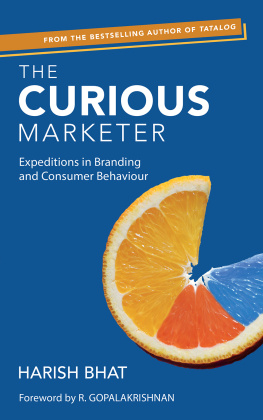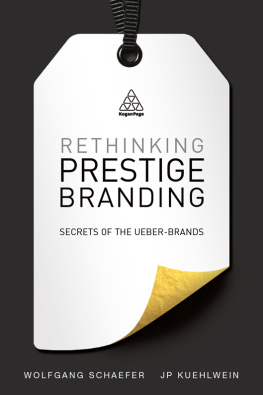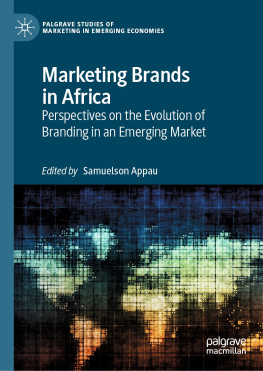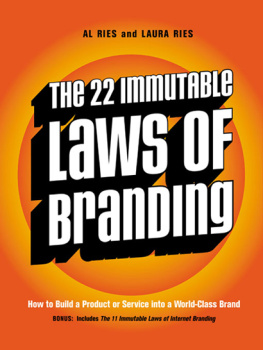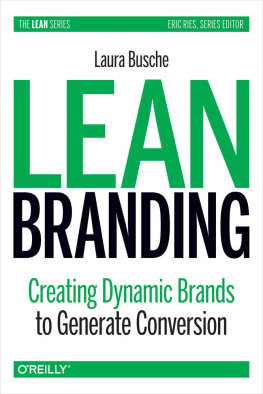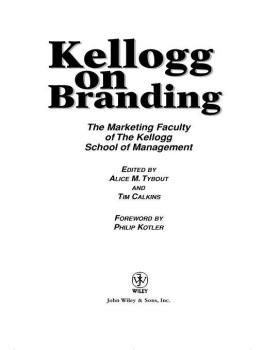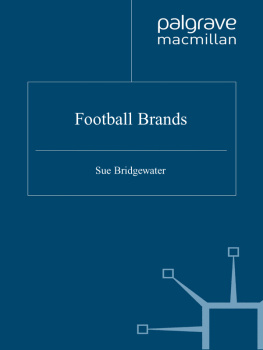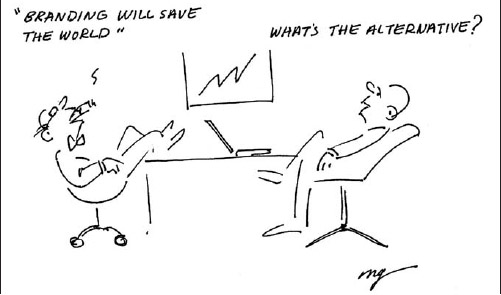Marc Gobe - Emotional Branding: The New Paradigm for Connecting Brands to People
Here you can read online Marc Gobe - Emotional Branding: The New Paradigm for Connecting Brands to People full text of the book (entire story) in english for free. Download pdf and epub, get meaning, cover and reviews about this ebook. year: 2010, publisher: Allworth, genre: Business. Description of the work, (preface) as well as reviews are available. Best literature library LitArk.com created for fans of good reading and offers a wide selection of genres:
Romance novel
Science fiction
Adventure
Detective
Science
History
Home and family
Prose
Art
Politics
Computer
Non-fiction
Religion
Business
Children
Humor
Choose a favorite category and find really read worthwhile books. Enjoy immersion in the world of imagination, feel the emotions of the characters or learn something new for yourself, make an fascinating discovery.
Emotional Branding: The New Paradigm for Connecting Brands to People: summary, description and annotation
We offer to read an annotation, description, summary or preface (depends on what the author of the book "Emotional Branding: The New Paradigm for Connecting Brands to People" wrote himself). If you haven't found the necessary information about the book — write in the comments, we will try to find it.
Emotional Branding is the best selling revolutionary business book that has created a movement in branding circles by shifting the focus from products to people. The 10 Commandments of Emotional Branding have become a new benchmark for marketing and creative professionals, emotional branding has become a coined term by many top industry experts to express the new dynamic that exists now between brands and people. The emergence of social media, consumer empowerment and interaction were all clearly predicted in this book 10 years ago around the new concept of a consumer democracy. In this updated edition, Marc Gob covers how social media helped elect Barack Obama to the White House, how the idea behind Twitter is transforming our civilization, and why new generations are re-inventing business, commerce, and management as we know it by leveraging the power of the web. In studying the role of women as shoppers in chief, and defining the need to look at the marketplace by recognizing differences in origins, cultures, and choices, Emotional Branding foresaw the break up of mass media to more targeted and culturally sensitive modes of communications. As the first marketing book ever to study the role of the LGBTQ community as powerful influencers for many brands, Emotional Branding opened the door to a renewed sensitivity toward traditional research that privilege individuality and the power of the margins to be at the center of any marketing strategy. A whole segment in the book looks at the role of the senses in branding and design. The opportunity that exists in understanding how we feel about a brand determines how much we want to buy. By exploring the 5 senses, Emotional Branding shows how some brands have built up their businesses by engaging in a sensory interaction with their consumers. Emotional Branding explores how effective consumer interaction needs to be about senses and feelings, emotions and sentiments. Not unlike the Greek culture that used philosophy, poetry, music, and the art of discussion and debate to stimulate the imagination, the concept of emotional branding establishes the forum in which people can convene and push the limits of their creativity. Through poetry the Greeks invented mathematics, the basis of science, sculpture, and drama. Unless we focus on humanizing the branding process we will lose the powerful emotional connection people have with brands. Critics hailed Emotional Branding as a breakthrough and a fresh approach to building brands. Design in this book is considered a new media, the web a place where people will share information and communicate, architecture a part of the brand building process, and people as the most powerful element of any branding strategy. Most importantly, it emphasizes the need to transcend the traditional language of marketingfrom one based on statistics and data to a visually compelling new form of communication that fosters creativity and innovation.
Marc Gobe: author's other books
Who wrote Emotional Branding: The New Paradigm for Connecting Brands to People? Find out the surname, the name of the author of the book and a list of all author's works by series.


